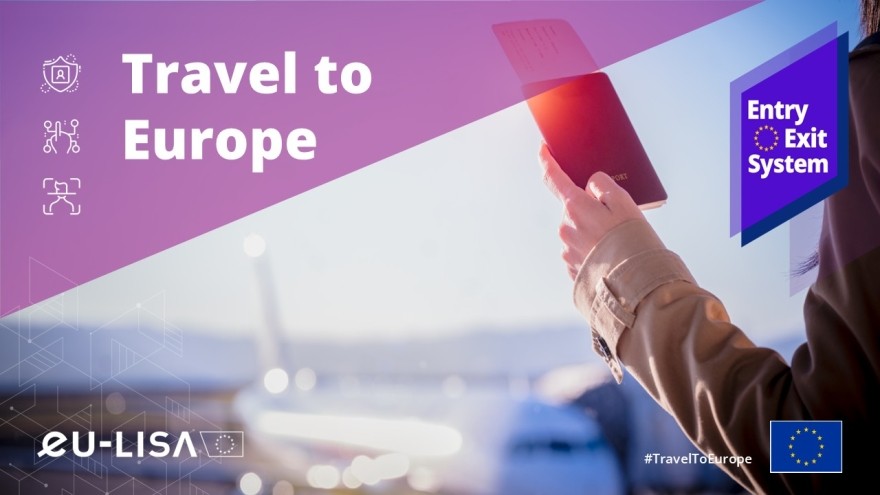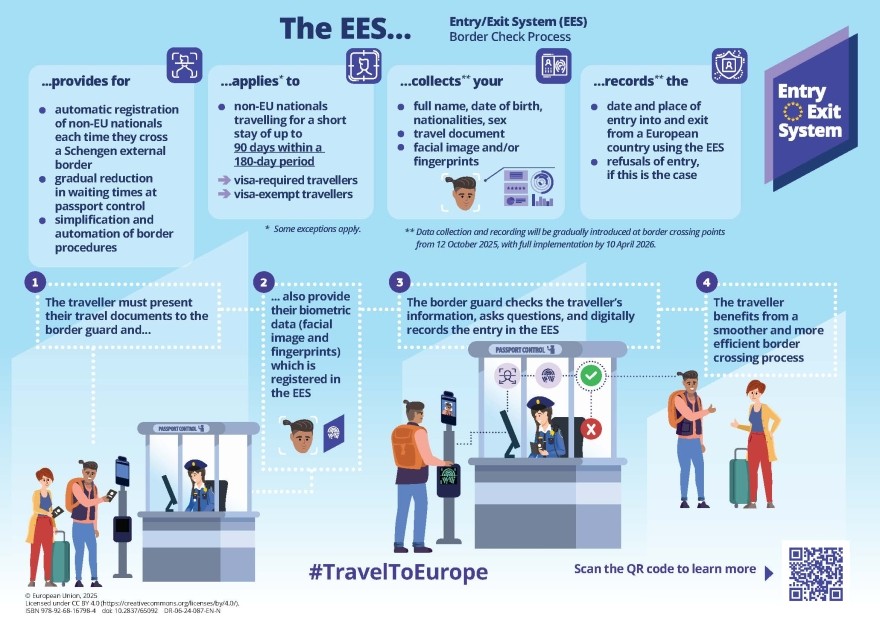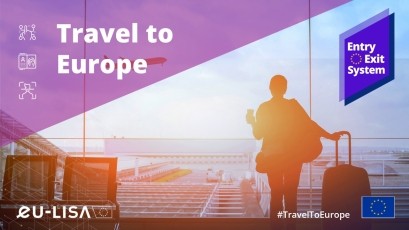Actions

The European Commission has launched an information campaign to raise awareness and prepare the public for the upcoming entry into operation of the Entry/Exit System (EES) on 12 October 2025.
The EES is an automated IT system that will replace the manual stamping of passports for non-EU nationals travelling for short stays. It will register the time and place of each entry and exit at the external borders of 29 European countries, making border checks faster and more reliable while strengthening security across the Schengen Area.
Clear Information for Travellers and Citizens
The campaign is designed to prepare travellers for the introduction of the EES by providing clear and practical guidance on the new procedures. It explains in accessible terms what travellers will experience at border checks, including the presentation of a passport and the registration of biometric data such as a facial image and fingerprints.
At the same time, it informs the wider public of the broader value of the system, emphasising how the EES will contribute to more effective border management, strengthen security across the Schengen Area and support the prevention of identity fraud or overstaying.
To ensure broad accessibility, campaign materials — including leaflets, posters, videos and other visuals — are available in all official EU languages as well as several widely spoken non-EU languages, and can also be downloaded from the European Commission's website.
Communication Focus
The campaign communicates both the immediate implications for travellers and the wider benefits for Europe’s border management. It highlights the concrete steps that will be introduced at border crossing points once the system becomes operational, while also underlining how the EES contributes to the modernisation of checks, the reinforcement of security and the improvement of the overall travel experience.
Campaign Roll-Out
The information effort will accompany the launch of the EES and continue for approximately one year thereafter. To support this objective, a broad portfolio of communication products has been developed, ranging from printed materials for display at border crossing points to dedicated information for carriers and digital content suitable for websites and social media platforms. Making these resources available in multiple EU and non-EU languages ensures that key messages reach as wide an audience as possible.
Working Together to Reach Travellers
Ensuring that travellers worldwide are well informed requires close cooperation. The Commission has invited Member States, carriers, travel operators, EU Delegations and other partners to disseminate the campaign materials through their networks. By displaying information at consulates, airports, ferry terminals, train stations and other travel hubs, as well as through online channels, these partners play an essential role in ensuring that prospective visitors to Europe are prepared in advance and that border crossings proceed as smoothly as possible.
Dedicated EES Website
At the centre of the campaign is the EES information portal — travel-europe.europa.eu/ees. The website brings together all relevant information in one place — including how the system functions, to whom it applies and what travellers should expect at border checks. It also provides answers to frequently asked questions, information on data protection and clear guidance on travellers’ rights.
About the EES
Once fully operational, the Entry/Exit System will replace the long-standing practice of stamping passports of non-EU nationals visiting for a short stay in 29 European countries. Every time a traveller enters or leaves the external borders of one of these countries, their travel document, facial image and four fingerprints will be registered electronically.
The central part of the system has been developed and is managed by eu-LISA, the EU Agency for the Operational Management of Large-Scale IT Systems in the Area of Freedom, Security and Justice. eu-LISA ensures the functioning and availability of the central system, while Member States are responsible for implementing and using the system at national level.
From 12 October 2025, the introduction of the EES will not happen everywhere in the same manner. Some countries will use the system at all their border crossing points, while others will roll it out gradually across their airports, seaports and land borders. During this transitional period, which will last six months, travellers may notice different procedures depending on where they cross the Schengen external borders, in the sense that their biometric data may be collected or not. Their passports will continue to be stamped as at present. As of 10 April 2026, the EES will be used in full and at all border crossing points, and passport stamping will be replaced with electronic records.




